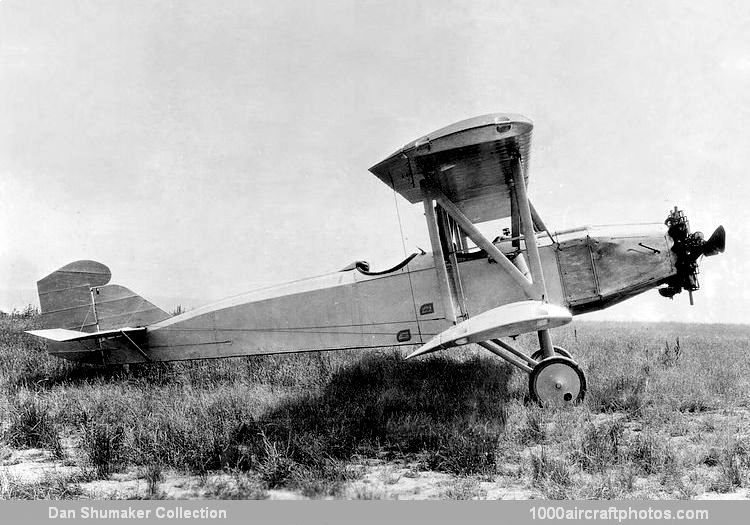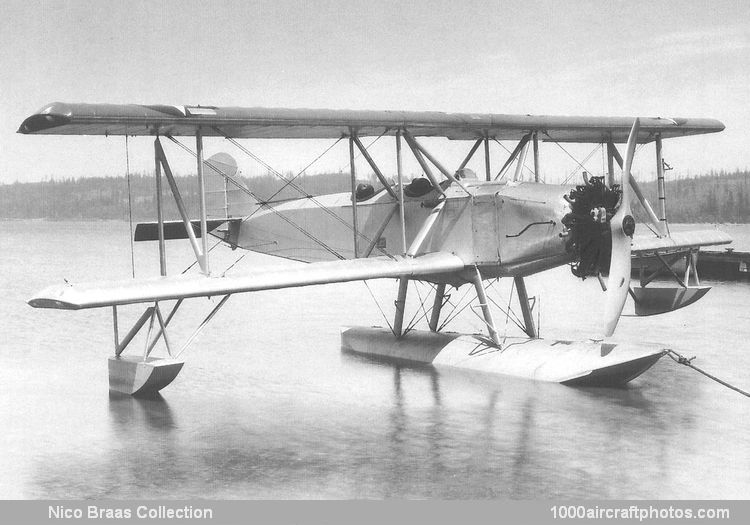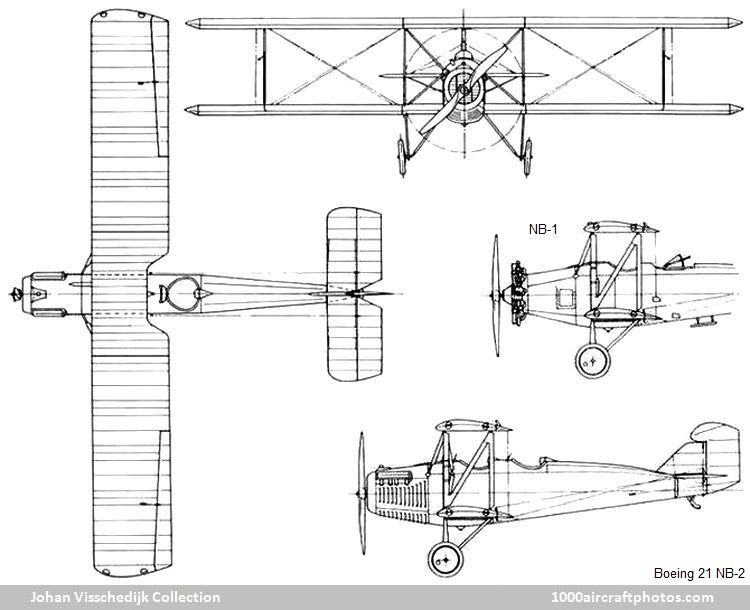DAN SHUMAKER COLLECTION
No. 11158. Boeing 21 VNB-1 (A-6749 c/n 518) US Navy
No. 11158. Boeing 21 NB-1 US Marine Corps
No. 11158. Boeing 21 NB-3 (A-6856 c/n 773) US Navy
No. 11158. Boeing 21 NB-4 (A-6857 c/n 774) US Navy
Top: VNB-1 photograph from Boeing
Top: APS No. 2426
Second: Photograph from USMC
Second: APS No. 2355
Fifth: Photograph from Boeing
Sixth:
APS No. 2427
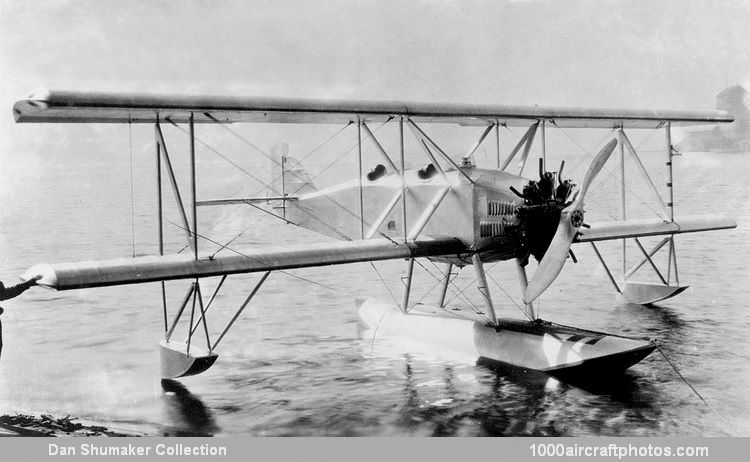
01/31/2012. Remarks by
Johan Visschedijk: "The above pictured Model 21 VNB-1 was the prototype of the production primary trainer models that were designated NB-1 and NB-2 by the USN. The designation of VNB-1 applied to the prototype was not entirely correct. The letter N correctly identified the design as a Navy trainer, but while the letter V designated heavier-than-air aircraft types in Navy nomenclature, it was not used as part of the actual aircraft designation.
The Model 21 incorporated such advanced features for the period as N-struts to eliminate the wing incidence wires, divided-axle landing gear with elastic cord shock absorbers, and the new 200 hp Lawrance J-1 air-cooled radial engine. The only unconventional feature was the use of a wide center section for both wings, braced by an additional bay of struts, and the fact that the upper and lower wing panels could be interchanged. The airfoil was the then uncommonly thick Gottingen 387, again reflecting Fokker influence. Provision was made for operating the Model 21 as either a land or a seaplane.
The VNB-1 with BuNo. A-6749 (c/n 518), was tested extensively by the Navy but was rejected at first as a primary trainer because it was almost too easy to fly and could not be spun. Modifications were made which allowed the aircraft to spin, and production orders resulted. Five additional Model 21s were built and delivered to the government of Peru, three in 1924 (s/n 1-E-1 to 1-E-3 c/n 649 to 651) and two in 1927 (c/n 936, 937).
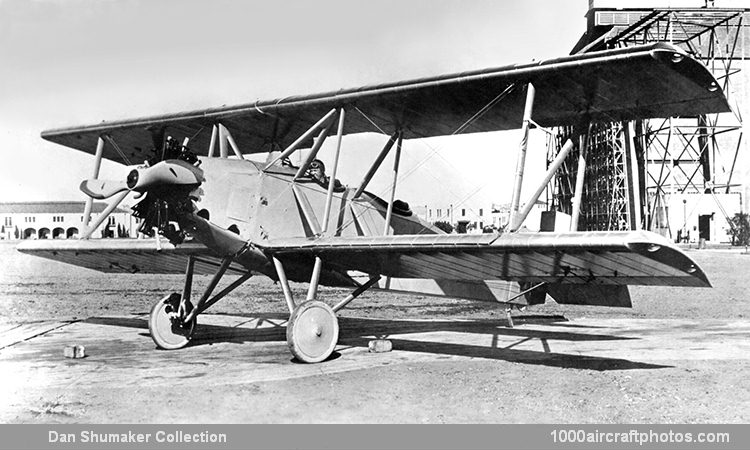
Boeing 21 NB-1, APS No. 2355
The USN received 41 production NB-1s (BuNos. A-6750 to A-6768 c/n 671 to 689, A-6836 to A-6857 c/n 753 to 774), deliveries started on December 5, 1924. The modifications incorporated to permit spinning as required by the training curriculum proved disadvantageous in that the aircraft became too spinnable and went into flat spins from which they could not recover. Compromise modifications were worked out to make the design acceptable.
Later model 220 hp Wright J-5 engines replaced the original J-1s, 2s, and 4s. One NB-1 was used by the Navy to test a new oleo-pneumatic shock absorbing landing gear in April 1925.
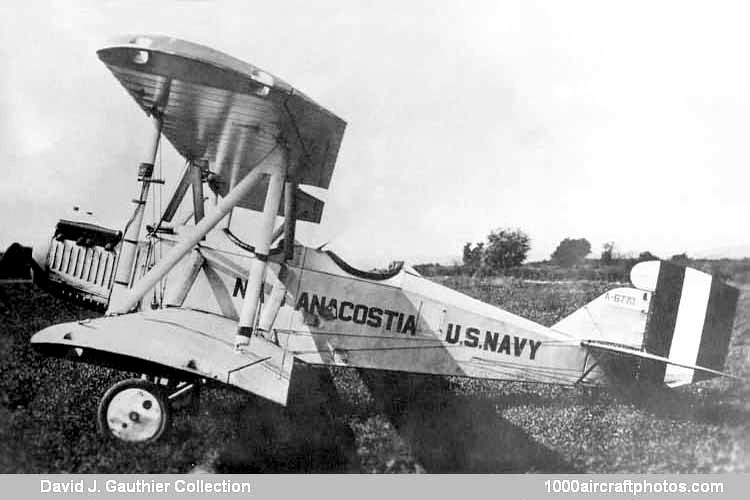
Boeing 21 NB-2 (A-6770) (
David Gauthier Memorial Collection)
The thirty NB-2s (BuNos. A-6769 to A-6798 c/n 690 to 719) were structurally identical to the NB-1 except for the power plant, which was a war-surplus Wright-Hispano E-4 of 180 hp. Installation of this unit was made at the request of the Navy to take advantage of the large stocks of this French-designed but American-built power plant that were still on hand.
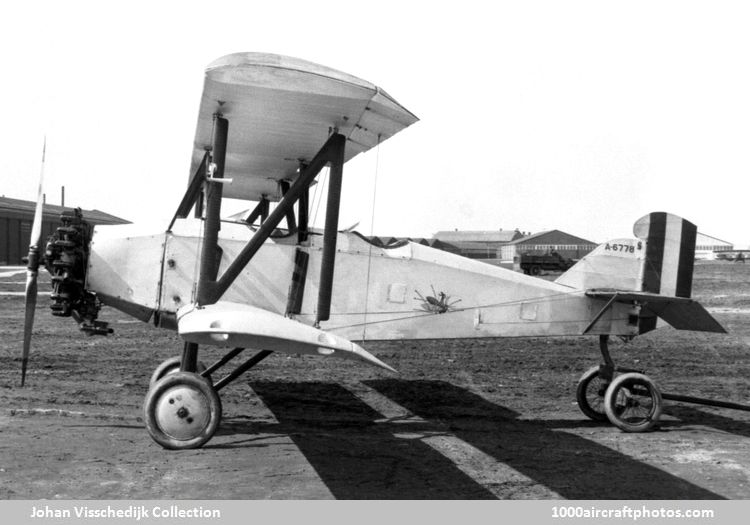
Boeing 21 NB-2
"Mosquito Bomber" (A-6778) (
Johan Visschedijk Collection)
The thick wings of the NB-1 and NB-2 gave it good load-carrying characteristics. These were put to good use by the USMC, which modified some NB-1s and NB-2s for use as spray aircraft for mosquito control in the tropics after aerial spraying was found to be the most efficient way to handle the problem. Note the dead mosquito logo on the fuselage of the nicknamed
"Mosquito Bomber", and read the
"Mosquito Bomber" Story.
The NB-3 was a result of a program initiated to overcome the undesirable spinning characteristics that had appeared in the NB-1s and NB-2s. Boeing retained the last two NB-1 airframes (BuNos. A-6856, A-6857) at the factory and fitted them with new lengthened fuselages fitted with various tail surface modifications.
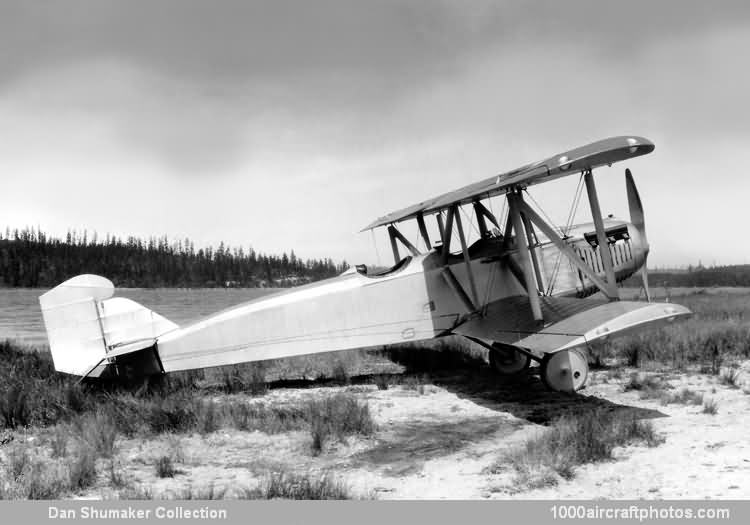
Boeing 21 NB-3 (A-6856)
BuNo. A-6856 was fitted with the Wright-Hispano engine of an NB-2 and was redesignated NB-3. The engine was moved 16 in (41 cm) forward and the tail was extended 26 in (66 cm). The tail modification resulted in a distinctive downward bend in the upper longeron. The NB-3 was tested at the Sand Point
NAS, both on wheels and floats, starting on June 27, 1925. However, the benefits of the modification were insufficient to justify the cost of reworking all the existing aircraft, so the NB-3 was refitted with a standard fuselage and power plant and delivered as an NB-1.
Boeing 21 NB-4 (A-6857) APS No. 2427
Boeing 21 NB-4 (A-6857) (
Nico Braas Memorial Collection) APS No. 2428
The NB-4 was the second spin-test NB-1 (BuNo. A-6857) and incorporated the same modifications as the NB-3 except that it was fitted with the lighter Lawrance engine, which was moved forward 26 in (66 cm). Testing, also both on wheels and floats, began on July 9, 1925, but also this aircraft was reconverted to standard configuration and delivered as an NB-1."
Created January 31, 2012





